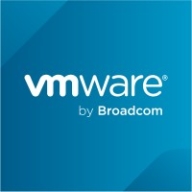

VMWare Tanzu CloudHealth and Cloudify are competing products in cloud management and optimization. Cloudify is perceived as having the upper hand due to its robust features and significant value addition.
Features: VMWare Tanzu CloudHealth offers comprehensive cost management tools, policy-driven governance, and insights into cloud expenditures. Cloudify excels with its orchestration of cloud services across hybrid environments, automation capabilities, and support for TOSCA blueprints, providing a powerful feature set.
Room for Improvement: VMWare Tanzu CloudHealth could enhance its automation features and support for hybrid clouds. Additionally, refining scalability options could further benefit users. Cloudify may improve by expanding user training resources, enhancing its user interface, and integrating more with existing enterprise tools.
Ease of Deployment and Customer Service: VMWare Tanzu CloudHealth integrates smoothly with existing infrastructure with a focus on scalability. It offers extensive support options. Cloudify emphasizes agile deployment, offering flexibility across platforms and specialized support for complex configurations.
Pricing and ROI: VMWare Tanzu CloudHealth involves higher initial costs but delivers ROI through cost analysis features. Cloudify offers a competitive pricing structure that highlights long-term cost-effectiveness with its automation efficiencies, making it appealing for cost-sensitive businesses.
| Product | Market Share (%) |
|---|---|
| Cloudify | 1.8% |
| VMWare Tanzu CloudHealth | 1.9% |
| Other | 96.3% |


| Company Size | Count |
|---|---|
| Small Business | 3 |
| Large Enterprise | 6 |
| Company Size | Count |
|---|---|
| Small Business | 4 |
| Midsize Enterprise | 2 |
| Large Enterprise | 4 |
Cloudify is an open-source orchestration-first cloud management platform. The solution allows applications to efficiently run across multiple cloud or data center platforms for premium multi-cloud infrastructure automation and orchestration. It provides infrastructure automation using environment as a service (EaaS) technology to deploy and continuously manage any cloud, private data center, or Kubernetes service from one central point while leveraging existing toolchains.
Cloudify Product Highlights
Cloudify Features
Cloudify has many valuable key features. Some of the most useful ones include:
Cloudify Benefits
There are many benefits to implementing Cloudify. Some of the biggest advantages the solution offers include:
VMware Tanzu CloudHealth, formerly known as VMware Aria Cost Powered by CloudHealth, is a specialized cloud management platform tailored for Multi-Cloud Cost Optimization. It offers comprehensive visibility into cloud spending across various providers, enabling users to identify areas for optimization and make informed resource allocation decisions. With features like reserved instance management, resource rightsizing, and automated cost governance policies, it facilitates financial management for optimal cost efficiency. Beyond cost optimization, Tanzu CloudHealth enhances cloud operations through workload optimization and governance automation, catering to multi-cloud environments encompassing public, private, and hybrid clouds. Its primary focus remains on enabling organizations to effectively manage and reduce cloud expenditures while supporting operations across diverse cloud platforms.
We monitor all Cloud Management reviews to prevent fraudulent reviews and keep review quality high. We do not post reviews by company employees or direct competitors. We validate each review for authenticity via cross-reference with LinkedIn, and personal follow-up with the reviewer when necessary.